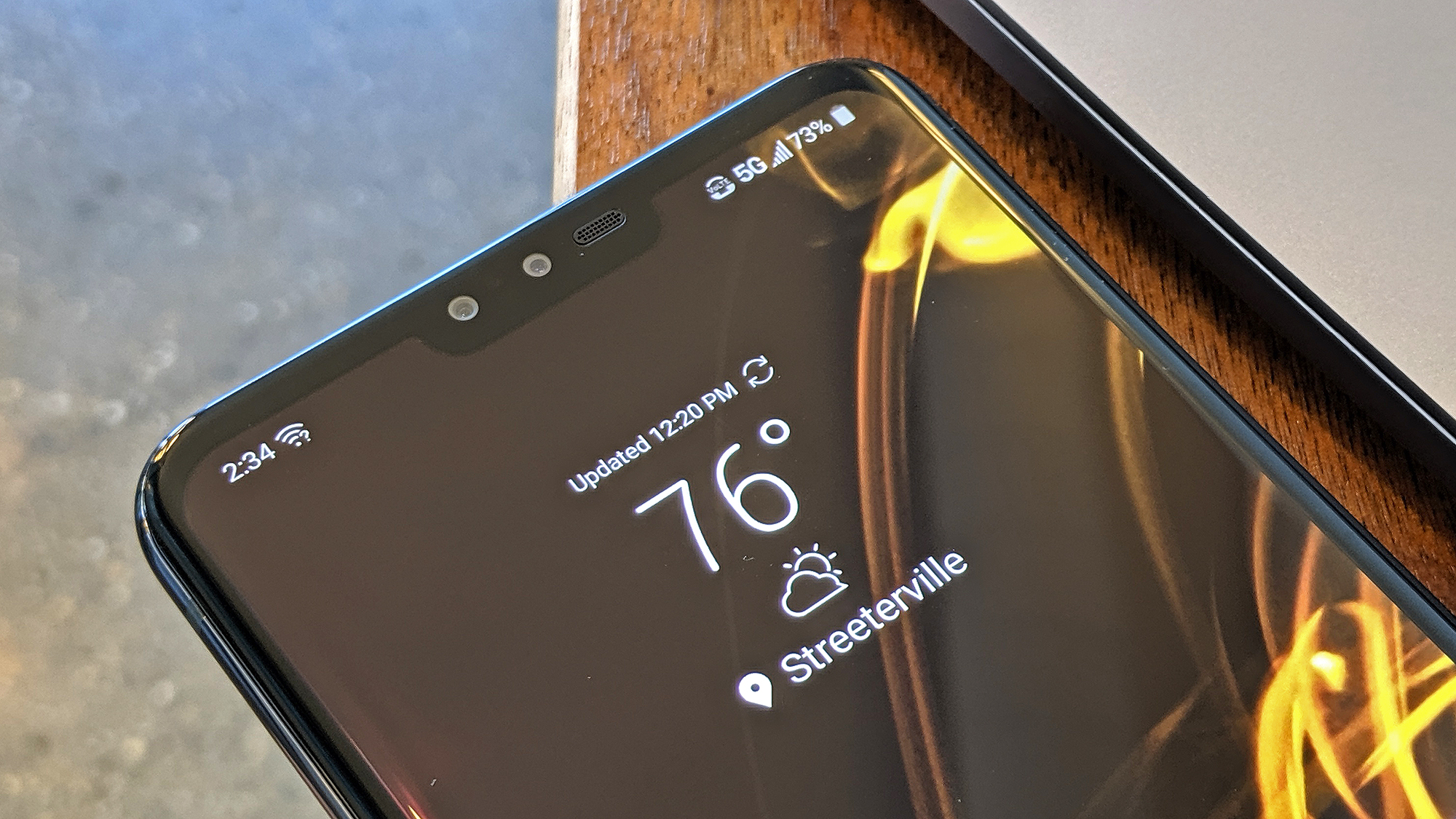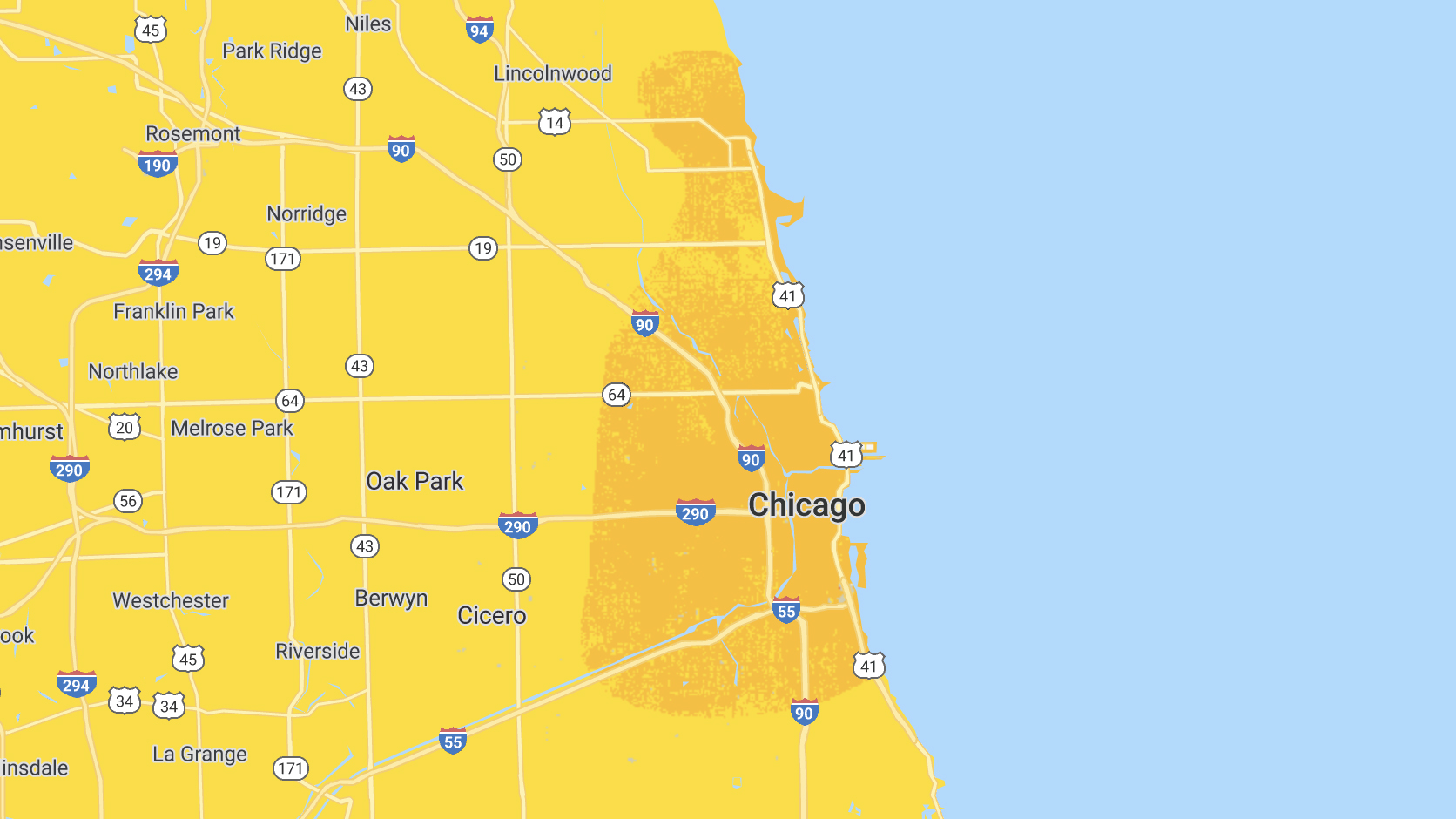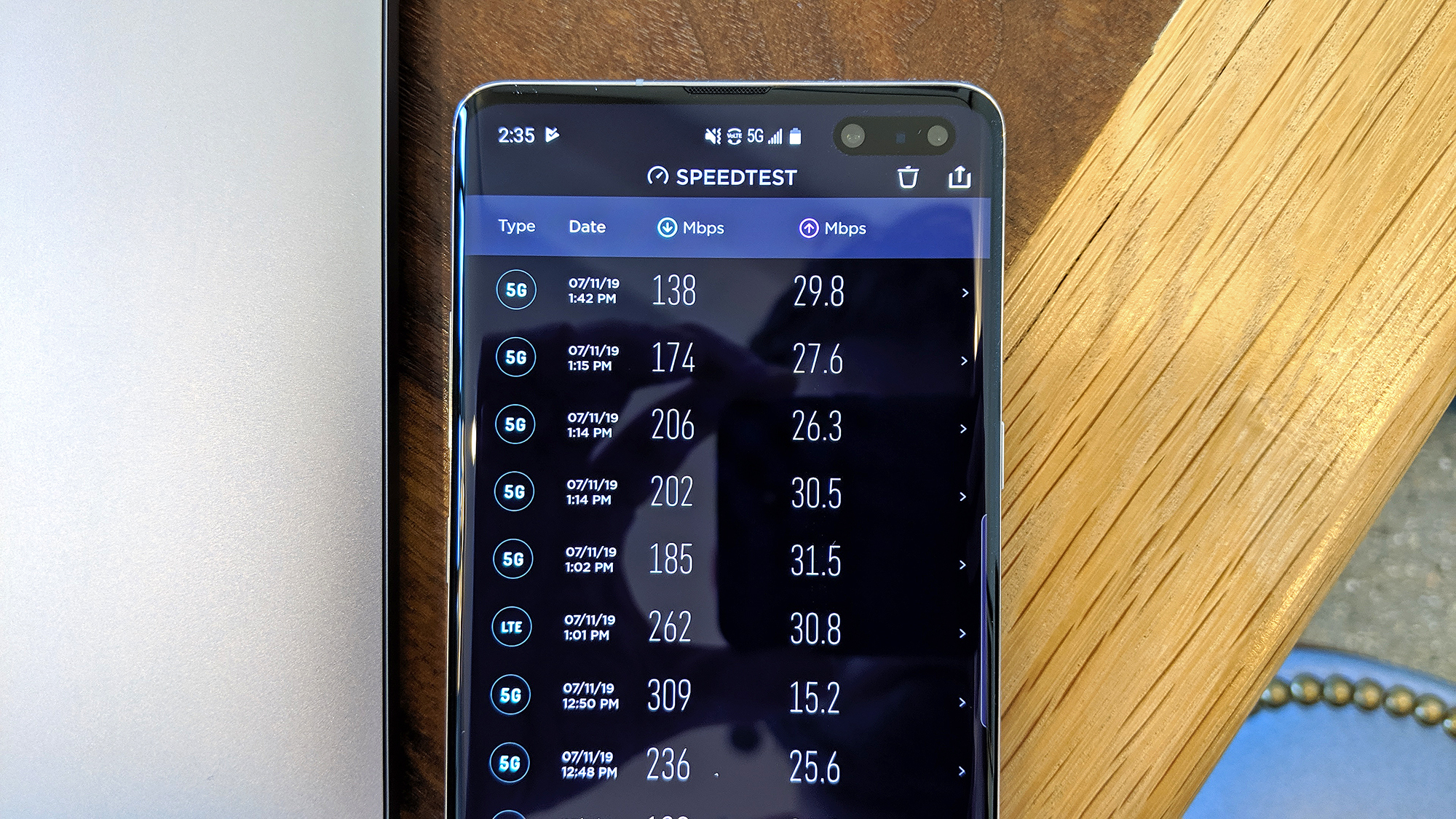5G Face-Off: Sprint vs Verizon in Chicago
Verizon's 5G is faster, but you can find Sprint's network everywhere
Every week, it seems like one of the big four wireless carriers is lighting up a 5G network somewhere in the United States. Hot on the heels of AT&T's launch in Las Vegas, Sprint has flipped the switch on its 5G network in Chicago, joining four other cities where Sprint's 5G service is available.

However, this particular launch is special. Up until now, carriers have typically planted their 5G flags in uncontested markets where their 5G coverage is the only game in town. But with Sprint delivering 5G in the Windy City, it's taking the fight directly to Verizon, which launched its own 5G network in Chicago back in April.
Since then, Verizon's speeds have been climbing. Our earliest tests with Big Red's Chicago 5G network, using the Moto Z3 equipped with Motorola's 5G Mod, yielded peak speeds short of 500 Mbps. When we returned to the city a month later for the Galaxy S10 5G's launch, that top speed more than doubled to about 1.1 Gbps.
In other words, Sprint has a fight on its hands. In May, we visited Dallas for the Now Network's first 5G launch, and saw max downloads around the 700 Mbps mark. That's not the fastest 5G we've seen yet, but Sprint's 2.5-GHz implementation of 5G fundamentally differs from the tack taken by Verizon, T-Mobile and AT&T, which have decided to prioritize speed over coverage by using millimeter-wave (mmWave) networks, at least initially.
Here are our impressions of Sprint's 5G network in Chicago, and how it measures up to Verizon's.
It's about coverage — not speed
First off, the fact that Sprint's 5G network augments the carrier's existing LTE Advanced infrastructure means you don't need to be outside, within line-of-sight of a 5G node to grab a signal. Sprint's 5G can penetrate obstructions and casts a wide net over downtown Chicago, though there are many more pockets where 5G isn't available as you stray below River North, or up above Old Town near the Highway 64 corridor.

It's for that reason that I wasn't surprised to see my LG V50 ThinQ 5G display a 5G signal practically everywhere I wandered up and down Chicago's Magnificent Mile. Even inside the Intercontinental Hotel at North Michigan and East Grand, I averaged 197 Mbps on downloads across five tests, with a top result of 261 Mbps.
Now that's fast, though the best LTE networks in the country can already cross the 200 Mbps barrier in certain areas. We saw an average of 64.6 Mbps when we tested Sprint's LTE network in Chicago last year, so 5G is a definite improvement over that.
Still, about an hour earlier I wandered over to the corner of North Wabash and East Superior, where Verizon has a 5G mmWave small cell affixed to a lamp post, and saw 855 Mbps in a single test using a Verizon-connected Galaxy S10 5G.
Typically chasing down a 5G signal is tough to do, but Sprint's new 5G network in Chicago can pull down these speeds anywhere, anytime. Here it's so, so close to 200 Mbps! @tomsguide pic.twitter.com/vcz4q3oS4RJuly 11, 2019
Sprint's network won't reliably deliver that kind of throughput — not yet, anyway. The carrier's own data cites averages of 328 Mbps downloads, with peak speeds reaching around 800 Mbps. But the Now Network has been very outspoken about the fact that 5G is about more than speed; coverage and consistency is critical as well.
"What you see today is a glimpse of what 5G can be in every nook and corner of the country," Sprint chief technology officer John Saw said at the company's 5G launch event in Chicago. "Not just the cities."
And he's got a point. Verizon's mmWave network is unreachable inside buildings or really anywhere that isn't within a clear, reasonably-close view of a 5G node. It also won't make it to rural America — mmWave necessitates a mesh of cells, not a single, far-reaching tower. Sprint isn't guaranteeing quite the same performance indoors as out, though its mid-band flavor of 5G carries further and is worlds better at penetrating physical boundaries. That means you should still see quick downloads even when you're sitting at home.
Still work to do
While I appreciate the breadth of Sprint's 5G, the speeds did underwhelm at times. Even when I was outdoors, I rarely got anywhere near the 328 Mbps Sprint claimed (my record for the day was 305 Mbps), let alone that lofty ceiling of 800 Mbps.
On the corner of West Ontario and North Wells, the best I could muster was a 205 Mbps average across five tests — this time using a Galaxy S10 5G, which Sprint is launching in Chicago tomorrow and in the rest of the country on July 19. Compare that to the 700 Mbps my Verizon 5G handset averaged at the same corner, and I started to question whether Sprint's implementation of 5G was really the generational leap it was cracked up to be.

For a more practical test, I downloaded the first episode of the third season of Stranger Things on Netflix — a 51-minute episode weighing in at 280 MB. That took 54 seconds on my Sprint-connected S10 5G — exponentially slower than the 5.6 seconds it took a Verizon S10 5G to download a 33-minute episode of Nailed It during my earlier trip to Chicago in May, though still several minutes quicker than it would have taken over typical LTE.
Next, I downloaded PUBG Mobile, a 2 GB game that, up until now, typically took about 2 minutes to download on most 5G networks. (The best result we've seen yet is 1 minute, 50 seconds from T-Mobile's 5G service in New York.) Here, Sprint's speed also paled in comparison to faster, yet less accessible mmWave networks, taking 3 minutes and 45 seconds.
That's almost twice as slow, though again, you have to consider the range of Sprint's service. I conducted this test next to a window in a coffee shop, and that never would have been possible on the Verizon S10 5G I was carrying. As it happened, a Verizon small cell was just down the block from this cafe, but the phone was totally unable to receive a signal unless I was outside (and even then, it couldn't maintain a stable connection).
Outlook
If you're a Sprint customer and you're hoping for gigabit speeds over 5G, my experience in Chicago may not have you feeling particularly enthusiastic about the carrier's progress.
Admittedly, I too was expecting faster downloads, based on what my colleague Caitlin McGarry saw when she tested Sprint's first 5G network in Dallas. That said, I was just happy to see that 5G icon in the status bar everywhere I roamed in downtown Chicago, which was quite a departure from my experience with Verizon.
Right now, in these early stages of 5G, every major carrier has to balance speed against coverage in their rollouts. Verizon has elected to prioritize the former, while Sprint is concentrating on the latter. And while the best of both schools of thought would obviously be preferable, I'm personally glad customers have the opportunity to choose for themselves.

Also, it's important to remember that improvements are being made every single day. Sprint's speeds will climb, just as Verizon's map will widen. If Sprint's merger with T-Mobile is given the green light, the Uncarrier's mmWave and low-band assets will compliment the Now Network's 2.5-GHz spectrum well, painting a more complete 5G experience. Sprint even confirmed that no matter what 5G handset you buy today, on either its network or T-Mobile's, your device will be equipped to run on both carriers' combined 5G infrastructure. That should give early adopters some peace of mind.
With the addition of Chicago, Sprint now has 5G networks live in five cities nationwide, including Kansas City, Dallas, Houston and Atlanta. In the future, it plans to bring 5G to Los Angeles, Washington, D.C., Phoenix and New York City. With T-Mobile's mmWave 5G network already active in the Big Apple, Sprint's launch there could provide a sneak peek at what the country's first truly complete 5G network might actually look like.
Sign up to get the BEST of Tom's Guide direct to your inbox.
Get instant access to breaking news, the hottest reviews, great deals and helpful tips.
Adam Ismail is a staff writer at Jalopnik and previously worked on Tom's Guide covering smartphones, car tech and gaming. His love for all things mobile began with the original Motorola Droid; since then he’s owned a variety of Android and iOS-powered handsets, refusing to stay loyal to one platform. His work has also appeared on Digital Trends and GTPlanet. When he’s not fiddling with the latest devices, he’s at an indie pop show, recording a podcast or playing Sega Dreamcast.
